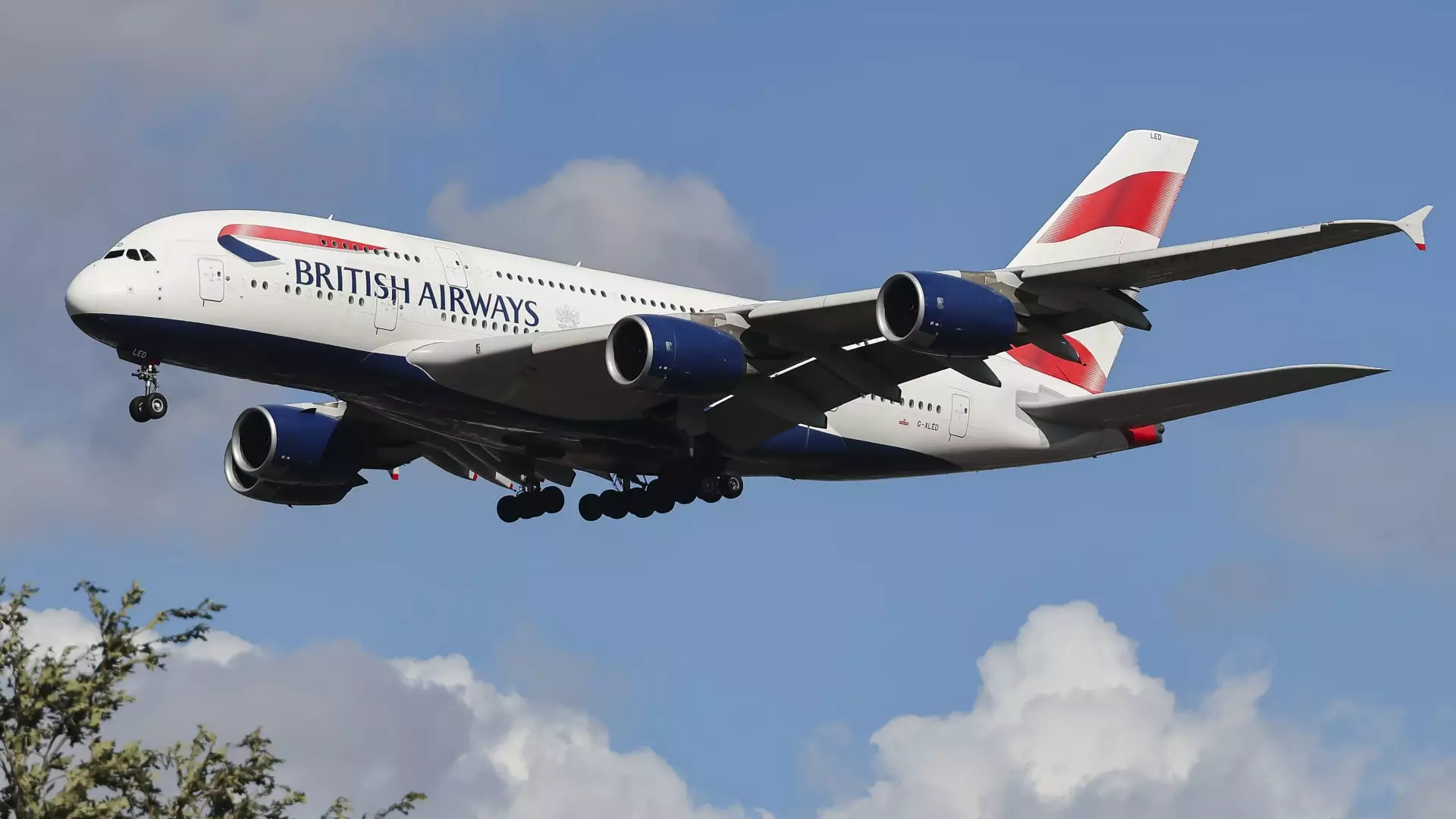In recent months, the airline industry has witnessed a notable shift in its operations concerning China. Major global carriers are retracting their services, and some are entirely pulling out from what was once a booming travel market. This trend has predominantly emerged after the closure of Russian airspace, catalyzed by geopolitical tensions surrounding Russia’s invasion of Ukraine. As airlines navigate these turbulent waters, they grapple with increased operational costs, dwindling demand, and the reallocation of resources to more profitable routes.
Virgin Atlantic and Scandinavian Airlines stand out as emblematic examples of this retreat, ceasing operations in China altogether. Virgin Atlantic’s withdrawal from Hong Kong marks an end to a 30-year era in this vital financial hub, a move echoed across many other airlines that have responded similarly in the past several months. The culmination of these actions suggests a larger pattern where airlines are investing their energies elsewhere as they adapt to new economic realities.
The airline industry is notoriously cyclical and heavily influenced by external factors. The closures post-COVID-19 are a byproduct of an uneven recovery in international travel. Data from the Chinese government shows that while the country welcomed approximately 49.1 million foreign travelers in 2019, that number drastically shrank to about 17.25 million by mid-2023. This contraction comes at a time when other Asian countries, such as Japan, have witnessed a resurgence in tourism, highlighting a tale of two recoveries—one thriving and the other struggling.
John Grant, the chief analyst at OAG, pointed out that European airlines that once invested heavily in routes to China have now found better opportunities elsewhere. For instance, British Airways reallocated its aircraft from diminishing demand in Beijing to more lucrative destinations like Cape Town, where load factor significantly improved. As airlines reprioritize their investments, it’s becoming increasingly clear that operational necessities often dictate strategic routes.
The operational landscape has fundamentally altered in the wake of flight bans on Russian airspace imposed by the EU and the UK, followed by reciprocal closures from Russia. As a result, European carriers are now compelled to chart longer routes to Asia, driving up fuel consumption and operational costs. In contrast, Chinese airlines continue to take advantage of open airspace, allowing them to capitalize on routes to Europe at lower costs and with more efficient flight crews.
This dynamic has engendered an uneven playing field in international aviation. While European and U.S. carriers face mounting expenses, Chinese airlines have emerged as formidable competitors. Interestingly, the necessity for longer flight durations has led some carriers to employ larger crews—an additional financial burden exacerbated by longer operational times.
Despite the pronounced retreat of several major global airlines from China, others remain steadfast, albeit at a markedly scaled-down capacity. U.S. airlines have not suffered as acutely, but they too are reevaluating their Chinese routes. They tread cautiously, maintaining a minimal presence in anticipation of a potential rebound that may not materialize any time soon. Yet, according to aviation experts, they are waiting for an opportune moment rather than committing to extensive investment in the Chinese market.
Grant suggests that the resurgence of Chinese airlines is inevitable but will require substantial time. The infrastructure, capacity, and public interest need to align to create a thriving travel environment once again. Chinese carriers are ramping up their operations, covering a significant share of flights between China and Europe—up to 82%—and they are introducing an array of new routes designed to stimulate their returning business.
The decision by major airlines to withdraw services from China prompts myriad questions about the long-term trajectory of international air travel. While some regions are bouncing back, China’s struggle to attract both inbound and outbound travelers highlights the persisting challenges faced by the aviation sector. The dual pressures of geopolitical tensions and economic uncertainties have fostered an environment where airlines must be astute, adaptable, and proactive to survive.
As the global aviation community collectively navigates these uncertain skies, the focus must remain steadfast on rebuilding, recalibrating, and reimagining what the travel landscape will look like in the future. Strategies will need to evolve to foster not only recovery but also resilience in this dynamic and ever-evolving sector.


Leave a Reply